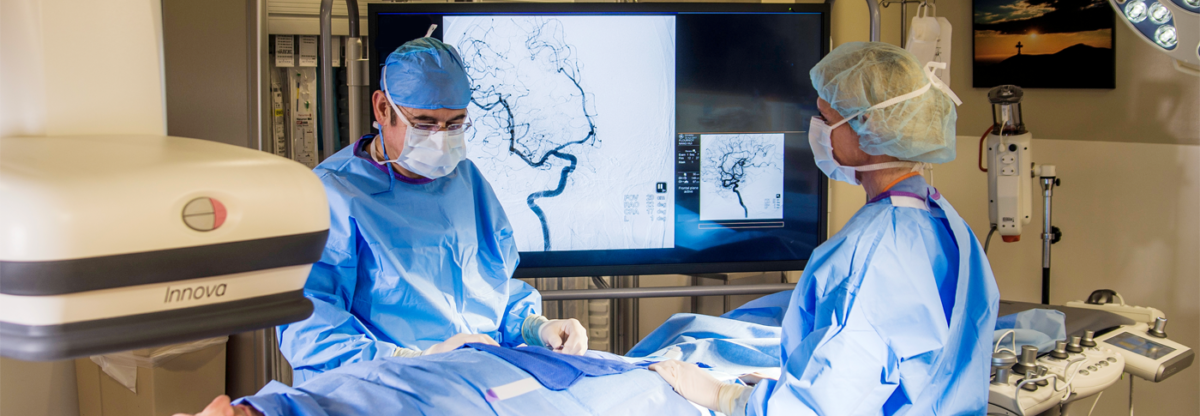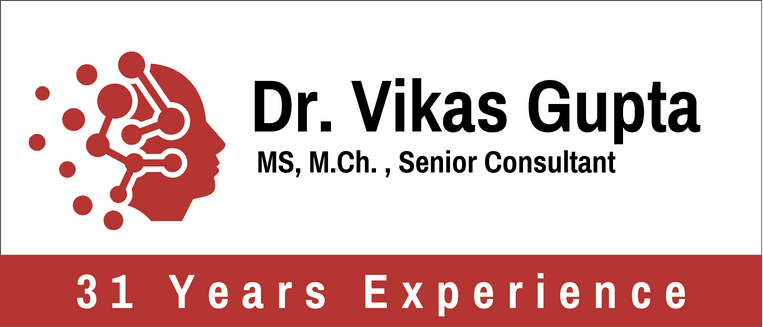
Stroke is a major global health concern, with millions of people affected each year. According to the World Health Organization (WHO), stroke is the second leading cause of death and the third leading cause of disability worldwide. Neurointerventional procedures, such as mechanical thrombectomy and carotid artery stenting, have revolutionized the management of stroke.
These minimally invasive techniques are highly effective in restoring blood flow to the brain and reducing disability in patients with acute ischemic stroke. With increasing access to neuro interventional services, the impact of stroke on mortality and long-term disability is expected to decrease significantly.
This blog delves into the success rates of neuro-interventional procedures for stroke prevention, supported by compelling statistics and insights from medical experts.
What Are Neurointerventional Procedures?
Neurointerventional procedures are minimally invasive techniques for treating conditions affecting brain and spinal cord blood vessels. These procedures, also known as endovascular treatments, involve accessing the affected area through small incisions and using specialized instruments to treat the condition.
These procedures are used to treat a variety of conditions, including aneurysms, strokes, and arteriovenous malformations. They offer several advantages over traditional surgery, including faster recovery times, reduced risk of complications, and improved outcomes.
Dr. Vikas Gupta is a renowned expert in neuro-interventional procedures, specializing in minimally invasive techniques to treat conditions affecting the brain and spinal cord’s blood vessels. Dr. Gupta has a track record of improving patient outcomes, focusing on patient-centered care and innovative approaches. His expertise and dedication to advancing neuro-interventional procedures make him a trusted resource.
What Is the Success Rate of Neurointerventional Procedures?
The success rates of these procedures are as follows:
- Carotid Artery Stenting (CAS): CAS is a neuro-intervention procedure to prevent strokes caused by carotid artery disease. Studies have shown that CAS can be highly effective, with one study reporting a success rate of over 95% in preventing strokes in high-risk patients.
- Intracranial Stenting: Stenting of intracranial arteries is another neuro-interventional approach used to prevent strokes. Research suggests that this procedure can significantly reduce the risk of stroke recurrence, with success rates ranging from 80% to 90% in specific patient populations.
- Mechanical Thrombectomy: Mechanical thrombectomy is a neuro-interventional procedure used to remove blood clots from blocked arteries in the brain, typically in the context of an acute ischemic stroke. Studies have demonstrated that mechanical thrombectomy can be highly successful, with one study reporting a success rate of up to 80% in restoring blood flow to the affected brain area.
- Embolization of Aneurysms: For patients at risk of stroke due to cerebral aneurysms, embolization is a neuro-interventional procedure that can be highly effective. Success rates for this procedure vary depending on the size and location of the aneurysm but generally range from 70% to 90%.
- Stent-Assisted Coiling: Stent-assisted coiling is a neuro-interventional technique for treating complex cerebral aneurysms. Studies have shown that this approach can be successful in preventing future strokes, with one study reporting a success rate of over 85% in achieving complete aneurysm occlusion.
Dr. Vikas explains, “Neurointerventional procedures have revolutionized stroke treatment, offering success rates comparable to traditional surgery but with fewer risks and faster recovery. Globally, these procedures have shown remarkable effectiveness, with mechanical thrombectomy, for example, achieving up to 80% success in restoring blood flow in acute ischemic stroke.”
“While traditional surgery remains a viable option, neuro-interventional techniques often provide superior outcomes and are preferred for their minimally invasive nature. The choice between these approaches depends on various factors, and a thorough evaluation by a specialist is crucial in determining the most suitable treatment path for each patient.” – adds Dr. Vikas.
What Key Factors Influencing Success Rates?
Several key factors influence the success rates of these procedures for stroke prevention:
- Patient Selection: The choice of procedure and patient suitability play a significant role in determining success rates.
- Time to Treatment: Early intervention is crucial, as delays can impact the procedure’s effectiveness.
- Expertise of the Medical Team: The experience and skill of the neurointerventionalists performing the procedure are critical.
- Technological Advances: Advancements in imaging and surgical techniques have improved outcomes.
- Post-procedure Care: Proper follow-up and rehabilitation can enhance the procedure’s success.
A satisfied patient shared, “I underwent a neuro-interventional procedure with Dr. Vikas Gupta for a cerebral aneurysm. His expertise and care were evident, and his minimally invasive approach meant I quickly recovered. I am grateful to have been under his care and highly recommend him to anyone facing similar neurovascular issues.”
Another patient expressed, “My experience with Dr. Vikas Gupta for a mechanical thrombectomy following a stroke was truly exceptional. His professionalism and skill were evident from our first consultation to the post-procedure follow-up. Thanks to Dr. Gupta’s expertise, I have recovered well and regained much of my quality of life. I am grateful to have had him as my doctor and would trust him with my care again without hesitation.”
What Are The Costs Of Neurointerventional Treatments In India?
The table below displays the cost of neuro-interventional therapies in India:
| Procedure | Average Cost (INR) | Average Cost (USD) |
| Carotid Artery Stenting | ₹1,50,000 – ₹3,00,000 | $2,000 – $4,000 |
| Mechanical Thrombectomy | ₹2,00,000 – ₹5,00,000 | $2,700 – $6,700 |
| Intracranial Stenting | ₹1,50,000 – ₹4,00,000 | $2,000 – $5,300 |
| Embolization of Aneurysms | ₹1,00,000 – ₹3,00,000 | $1,300 – $4,000 |
| Stent-Assisted Coiling | ₹1,50,000 – ₹3,50,000 | $2,000 – $4,700 |
Note: The costs mentioned are approximate and can vary based on several factors, such as the hospital, city, the complexity of the case, and additional procedures or tests required.
Conclusion
Neurointerventional procedures have revolutionized the field of stroke prevention, offering minimally invasive alternatives to traditional surgical approaches. The success rates of these procedures are encouraging, with many patients experiencing significant improvements in their quality of life and long-term outcomes. As technology continues to advance and our understanding of stroke prevention deepens, neuro-interventional procedures are poised to play an increasingly vital role in combating this devastating condition.
FAQs
Are neuro-interventional procedures safe?
Yes, these procedures are generally safe when performed by skilled professionals. They offer fewer risks and complications compared to traditional surgery.
How long does a neuro-interventional procedure take?
The duration of a neuro-interventional procedure varies depending on the complexity and type of procedure. It can range from 1 to 4 hours on average.
What is the recovery time after a neuro-interventional procedure?
Recovery time varies depending on the procedure and the patient’s overall health. Patients generally expect a few days to a few weeks of recovery before returning to normal activities.
Are there any side effects of these procedures?
While rare, some potential side effects of neuro-interventional procedures include bleeding, infection, and allergic reactions to contrast dye.
Can anyone undergo this procedure?
Only some people are eligible; suitability depends on the specific condition, overall health, and evaluation by a specialist.
Read More : How Serious Is Meningioma?
